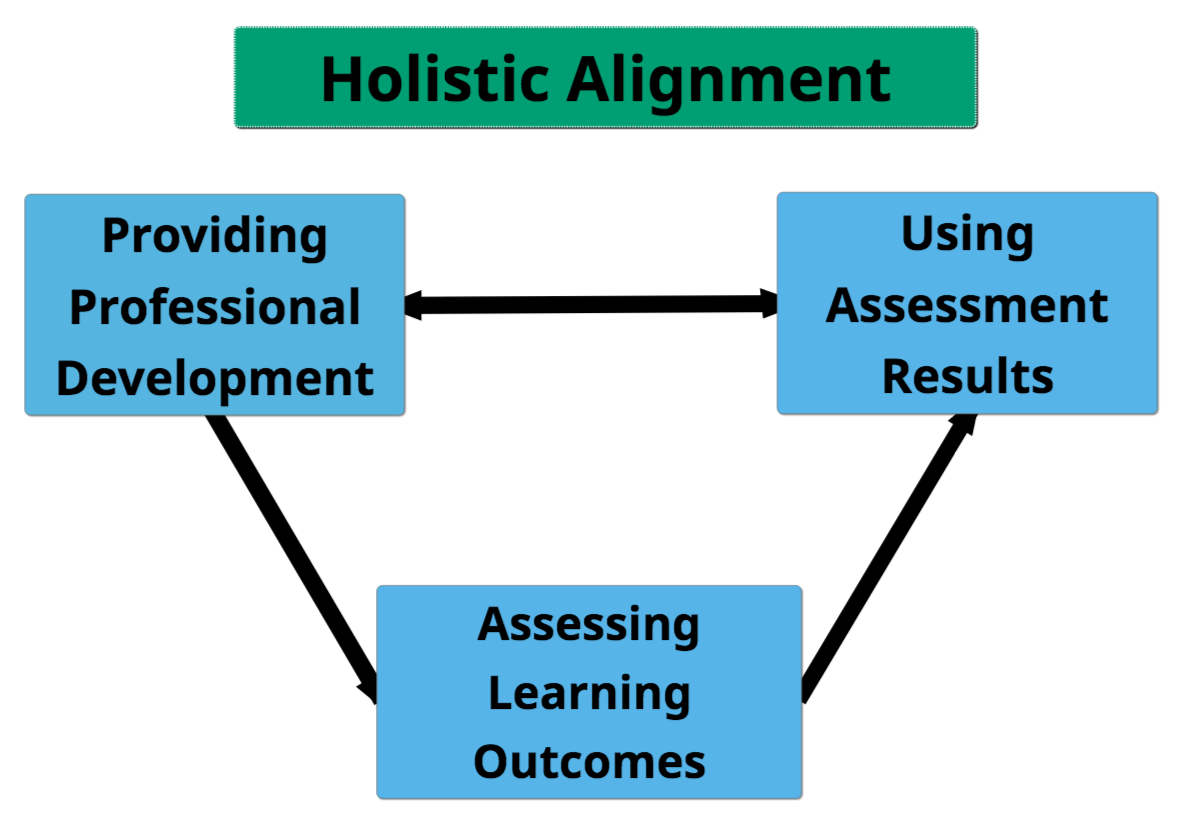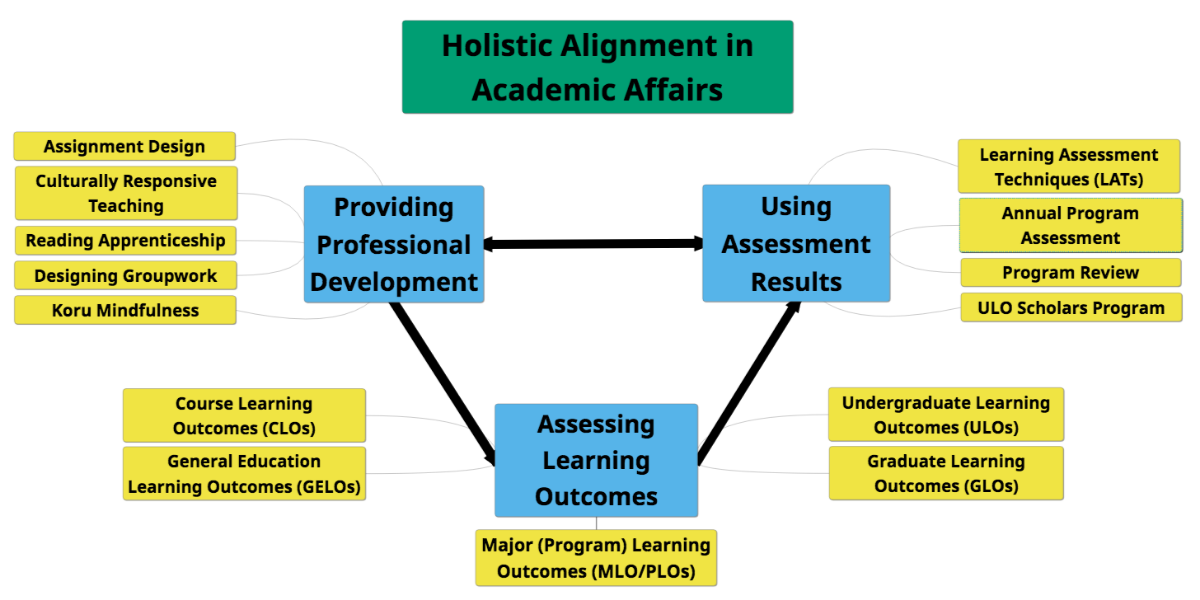Holistic alignment
This web page was created to share a framework, processes, and resources educators* at CSUMB and other institutions of higher education can use or adapt to improve facilitation of student learning.
*Educators include faculty, student affairs professionals, staff, students, and community partners.
Assessment at CSUMB improves holistic alignment and facilitation of student learning. Assessment is grounded by CSUMB's Assessment Philosophy and Practice and aligns with the National Institution for Learning Outcomes Assessment (NILOA) Transparency Framework.
What is holistic alignment?
Holistic alignment, as defined by Jankowski and Marshall (2017), extends Biggs' (1996) concept of constructive alignment. In constructive alignment, “teachers create pedagogies and activities for students that enable them to create the learning that is stated in the learning outcomes established for a class" (Jankowski & Marshall, 2017). While constructive alignment focuses on aligning what happens within courses (a valuable goal!), holistic alignment involves the entire institutional learning system. As Jankowski and Marshall (2017) explain, "[t]he relationships between general education and the major are reflected upon. The complementarity of academic curricula and co-curricular engagement are examined. The result is a more complex picture of learning."
Biggs, J. (1996). Enhancing teaching through constructive alignment. Higher education, 32(3), 347-364.
Jankowski, N. A. and Marshall, D. W. (2017). Degrees That Matter: Moving Higher Education to a Learning Systems Paradigm. Stylus Publishing.
Holistic alignment at CSUMB
Three pillars support holistic alignment at CSUMB: 1) assessing learning outcomes, 2) using assessment results, and 3) providing professional development.

Within Academic Affairs, each pillar is associated with the specific activities described below.

1. Assessing learning outcomes
Grounded in CSUMB's assessment philosophy and practice, assessment at the institutional, program, and course levels form the foundation of CSUMB's long-term effort to advance holistic alignment.
- Curricular Learning Outcomes
- Course level: Assessment at the course level outcomes occurs through implementation of Learning Assessment Techniques (LATS) by individual faculty members in their daily work with students.
- Program level: Assessment of Major Learning Outcomes (MLOs) occurs through annual program outcomes assessment and periodic program review.
- Institutional level: Assessment of Undergraduate Learning Outcomes (ULOs) occurs through annual assessments conducted by the ULO Coordinators and Scholars using the ULO Rubric and Rubric Guides.
- Co-curricular Learning Outcomes
- CSUMB's co-curricular learning outcomes (CCLOs) are under development with an anticipated approval date of spring 2020. CCLOs will provide a framework for assessing and integrating learning within and across students affairs and academic affairs.
2. Using assessment results
All of the above assessment activities integrate use of assessment results through the sharing and discussion of assessment reports in the context of faculty learning communities ( TLA Teaching Cooperatives), department meetings, and ULO Coordinator meetings. In addition, the Academic Senate Assessment Committee’s Annual Program Assessment Forum recognizes and disseminates course- and program-level strategies for increasing student learning and success.
3. Providing professional development
TLA works with campus partners to provide ongoing professional development to help CSUMB educators improve their ability to design assignments, facilitate learning, and assess student achievement at the course and program levels.
Continuous improvement
As a learning institution, CSUMB continually works to increase student learning through holistic alignment. While our institutional assessment structure and processes are becoming more stable, consistent, and effective, areas for growth include the following:
- Involving students in assessment
- Making assessment and learning activities more culturally responsive and equity-minded
- Improving and integrating facilitation of curricular and co-curricular learning and assessment
- Stabilizing curriculum maps and key assessment points so we can better create, align, and evaluate learning facilitation strategies
- Approving institution-level general education program learning outcomes and co-curricular learning outcomes
- Improving learning outcome statements and assessment at all levels
- Improving alignment of course learning outcomes to program and institutional learning outcomes, including general education
- Providing more and better professional development
- Scaffolding and Integrating professional development
- Assessing the effects of evidence-based interventions on student achievement
- Improving the validity and reliability of assessment data at all levels (activity, course, program, and institution)